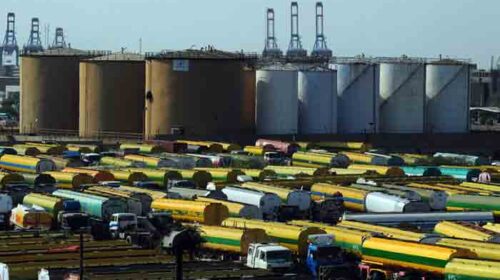Pakistan’s oil reserves shrank 7 percent to 233 million barrels in June 2022 from 249 million in the same month last year as deposits at major active fields are exhausting in the absence of any significant new discoveries.
Latest industry data showed oil reserves at Mardenkhel, Adhi, Shahdadpur, Pasakhi North East, Nashpa, and Mela fields declined by 13 percent, 14 percent, 15 percent, 22 percent, 38 percent, and 74 percent year-on-year, respectively.
Whereas, oil deposits at Makori East, Chanda, Tolanj West, and Togh reported a healthy growth of 18 percent, 185 percent, four-fold, and five-fold year-on-year respectively, according to latest hydrocarbon reserves numbers released by Pakistan Petroleum Information Services.
Total gas reserves in June 2022 also plummeted by 7 percent year-on-year, settling at 19,513 bcf (billion cubic feet).
Gas reserves at fields such as Mari, Uch, Shahdadpur, Kandhkot, Kunnar West Deep, and Qadirpur reduced 5 percent, 5 percent, 7 percent, 8 percent, 14 percent, and 26 percent year-on-year, respectively.
Meanwhile, the gas reserves of Sui registered an increase of 5 percent year-on-year.
Oil and gas reserves from new fields such as Turk South, Mulaki West, Naimat West DT, Bhatti North, Taj, Pandhi, Siab, Sial, Fazil, Mohar, Bashar, Jugan and Mari fields (Hilal, Iqbal, Bhitai, SML, Shahbaz and Shaheen) were added to the country’s total reserves during June.
Oil reserves of OGDC and PPL for June 2021 fell by 9 percent and 27 percent year-on-year, respectively, whereas Mari’s oil reserves surged 7.6x year-on-year.
In terms of gas reserves, POL, OGDC MARI, and PPL’s reserves declined by 3 percent, 4 percent, 5 percent, and 10 percent year-on-year, respectively.
According to brokerage Arif Habib Limited’s estimates, the remaining lives of OGDC, MARI, POL, and PPL reserve are 19 years, 18 years, 16 years, and 11 years, respectively.
The country’s total hydrocarbon reserves have a life of 15 years.
Hydrocarbon reserves are slumping at a time when Pakistan’s surging energy demands have created a gaping supply shortfall, forcing the government to rely on oil and gas imports to keep the wheels of the country moving.
The imports of the overall petroleum group witnessed an increase of 105.31 percent during the fiscal year 2021-22 as compared to the corresponding period of the last year.
During the period under review, the total imports of the petroleum group stood at $23,318.722 million, as against the imports of $11,357.853 million, last year.
Among petroleum commodities, the import of petroleum products rose by 133.90 percent, from $5,160.138 million last year to $12,069.436 million during the period under review.
The imports of crude oil also increased by 80.18 percent, from $3,107.314 million last year to $5,598.674 million during FY2022, whereas the imports of liquefied natural gas surged 90.65 percent from $2,617.127 million to $4,989.650 million.







